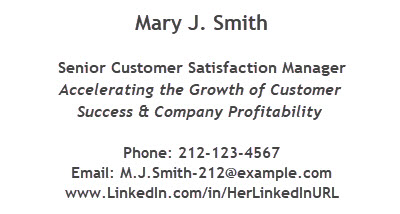
Almost everyone experiences at least one layoff in their work life.
A layoff is NOT the end of your career — more of a “speed bump” — but be well-prepared!
Being prepared for a layoff is always a good idea — layoffs can happen to anyone, almost any time.
Even people who work for “dream” employers like Google get laid off.
Having been laid off twice, I know that it’s a very stressful time, even if you are one of the “stars” in your workplace.
Don’t expect a layoff to be rational! Even top performers get laid off because employees are an expense that is easy to cut.
Prepare to Be Unemployed for a While
You may land a new job very quickly, but you may not. If you’ve done some preparation and planning, you will feel more in control when/if the proverbial ax falls.
Here are 10 things you can do in advance of being laid off, both at home (below) and at the office.
1. Be sure that you know your rights and your employer’s obligations.
Look into what is required by your state when someone is laid off. Frequently there is advanced notice required, which can be a couple of months, a couple of weeks, or less.
Also check to see if your employer has a standard severance package for people who are laid off. See what is in it, and how it may be expanded.
Sometimes, a severance package (e.g. 2 weeks or more depending on your job and employer) is specified, or a requirement exists that specifies you must be paid for unused vacation time you have accrued. It depends on your state’s rules.
Even if something is not in the official rules for your state, an employer may provide additional support. Prepare your list of things to negotiate if you are laid off.
This list can include company stock, vacation time, extended benefits (like healthcare), tuition payments, outplacement services (resumes, career coaching, job search help), and anything else promised to you (even verbally) or necessary for you until you get your next job.
Contact the people in your local Employment office for the rules that apply in your state. [See the Department of Labor’s Offices by location — Employment Offices by State.]
If you are offered less, let them know you are aware of the applicable laws and regulations. Tell them that you expect the law to be followed.
If they don’t seem to do that, contact the appropriate organization in your local state government.
2. Research your state’s unemployment compensation requirements.
When you are laid off, you will very likely qualify for unemployment compensation — weekly payments from your state.
Apply as soon as you have been laid off. Your first payment will usually appear within 2 or 3 weeks after registration.
The rules for qualifying for unemployment compensation vary by state as does the length of time someone who is unemployed can collect the compensation from 12 weeks to a maximum of 39 weeks (under the COVID 19 legislation), depending on the state.
Again, your state’s Employment Office (found here: Employment Offices by State) will have the applicable rules available for you to see.
3. Lay the ground work for a career/job change.
Before you jump into a job search, contemplate your future with a different employer, different job, and maybe a different career.
FOCUS — to be successful in your job search today, focus is required! You will struggle to hit your target when you don’t know what the target is.
Make a list — which employers you would like to work for? Who do you know who works there? Employee referrals are employers’ preferred way to hire.
Research those employers to learn more about them and what they need, and to demonstrate your interest in job interviews and networking.
You may want to make a career change, from a dying industry/ profession to a healthier or growing field. Take classes, volunteer, and talk with people in your target field about their jobs (what they like and don’t like, who succeeds and who fails, how to succeed, etc.), the best employers, the changes developing for the future.
These activities can make your job search much shorter because they will also expand your personal network! Read the Informational Interview articles for tips on setting up short (!) meetings with people who can help you move ahead in your career.
This is the good part about being laid off — you get a chance for a new beginning somewhere else (yes, you may not want to leave, but it also may be an opportunity for a beneficial change, temporarily disguised as a disaster).
For help figuring out what to else you might want to do, read Richard Bolle’s classic best seller book What Color Is Your Parachute. This book offers you solid advice for your career.
Check out Job-Hunt’s Guide to Gigs and Freelance Jobs and Guide to the Temporary Work Option for more alternatives if you are not sure you want another “permanent” job.
4. Create personal business/networking cards.
With your future direction in mind (above), start moving toward your new career.
When you meet someone who could help you with your job search, don’t hand out your work business cards with the contact info crossed off and your non-work contact info written in. Instead, give them your card, a card that presents you, separate from your current employer.
Put your name, non-work phone number and email address, plus LinkedIn profile URL and target job title/personal branding statement on the card, and location as in the fictional example below.

You do not need to include your street address on the card. Including your city and state is usually a good idea, so that people know your general location (or your target location).
When you include your LinkedIn URL, as above, you make it easy for members of your network and prospective employers to find your professional qualifications.
You can make business cards with your personal computer and printer and special business card paper which comes in sheets usually with 10 cards per sheet (Avery is one manufacturer) which you can usually find at Walmart, Amazon, and other similar retailers. Or you can have the cards printed at your local printer or business supply store like Office Depot.
Resist the temptation to put your work phone number and e-mail address on the card because they may someday (possibly soon) not work for you.
Read To Be Hired, Be Reachable – How to Safely Publish Your Contact Information on LinkedIn for tips on developing safe contact information to make public.
5. Update your LinkedIn Profile and get active.
If you don’t have a LinkedIn Profile, get one started now! A 2018 survey by CareerBuilder revealed that nearly half of employers (47%) will not contact a job applicant they cannot find online, likely assuming that the invisible person is out-of-date.
Expand the content of your Profile, particularly your Professional Headline, About, and the descriptions of your current and past jobs. Focus on experience and accomplishments focused on your future. Read Catch Recruiter Attention: 5 Critical LinkedIn Profile Elements Recruiters Want, 6 Ways to Make Your LinkedIn Profile Standout, and 12 Steps to Outrank Your Competitors in LinkedIn Search in 2021 (Personal LinkedIn SEO) for details.
Describe your current employer and job in very positive terms, brag about the products and services (if possible), and include your accomplishments so that future employers see what you have done and can do.
Activity on LinkedIn demonstrates that your are reachable via linkedIn, and appropriate activity on LinkedIn shows also demonstrates your knowledge, ability to communicate, and professionalism. Read Leveraging LinkedIn Status Updates for Your Job Search for details.
The greatest LinkedIn Profile won’t land you a new job without contact information in it. So, edit the “Contact info” section at the top of your Profile to add your new email address. And, recruiters love phone numbers, so add them safely, as described above.
This will make your non-work email account visible in your LinkedIn profile’s contact section, so recruiters can contact you outside of your employer’s email system (best for your job security). You can leave your current work email address there, if necessary.
While still employed, do NOT announce that you are job hunting on LinkedIn, in other social media, or any other public online venue. That can be easily found by your employer and lead to your termination.
Read the articles in Job-Hunt’s free Guide to LinkedIn for Job Search column.
6. Collect public recommendations on LinkedIn with written recommendations as backup.
If layoffs have already begun, get written recommendations before everyone scatters, preferably posted on LinkedIn. Hopefully, also printed on company letterhead.
Exchange LinkedIn recommendations with your co-workers (those who are good at their jobs) and, preferably, with your current and former bosses. This will enable all of you to have complete LinkedIn Profiles if (or when) the layoffs begin.
You may not be able to reach people if they leave the employer, too, so get those recommendation NOW, to have at home “just in case” the layoff hits you.
7. Expand your LinkedIn network.
Visibility inside of LinkedIn is essential. The more contacts you have, the greater your visibility inside LinkedIn search results.
To stay in touch with your current colleagues, co-workers, customers, suppliers, and other people who are part of your current work environment and network, connect with them on LinkedIn. You may be able to help them some day, and they may be able to help you.
Also connect with people from your past as well as people who work for your target employers.
Personalize each invitation to increase the probability the “invitee” will accept your invitation.
8. Start looking for new opportunities — but ****NOT AT WORK!****
While you are still employed, take the time to look around. Decide what you want to do (job title), and where you want to work next (target employers).
If you don’t have target employers, your job search will be longer and more challenging because, today, you need to use your target employers’ terminology (job titles, required skills, education/certification, etc.) in your LinkedIn Profile, your LinkedIn activities, and your resumes and applications.
DO NOT JOB SEARCH FROM WORK. That’s a good way to get fired, or, at a minimum, to have a very uncomfortable talk with your manager.
Remember, your employer may be monitoring your use of the Internet and computers while you are at work. They may also be monitoring voice mail, and a cell phone or tablet computer if you use one associated with your job.
See Managing Your LinkedIn Settings for a Stealth Job Search to manage LinkedIn, and check out the 50 Google Searches to Avoid Bad Employers for tips on avoiding risky employers.
9. Focus on building your personal SEO so you will be found by recruiters.
“SEO” is “search engine optimization,” so “Personal SEO” is optimizing your personal online visibility so you will be included in search results. When done well (and carefully), personal SEO helps make your LinkedIn Profile, resume, job applications, and other professional visibility easy to find when someone is looking for you (or someone like you).
The foundation of effective SEO is using the keywords relevant to your profession and expertise. “Keywords” are the words someone doing a search would use.
For example, I see many job seekers describe themselves as an “experienced marketing professional” in their LinkedIn Professional Headline.
Question: How many recruiters do you think use the term “experienced marketing professional” when searching LinkedIn to find someone who could fill their Social Media Marketing Analyst job?
Answer: None!
Recruiters are in a hurry, so they search on the job title, required skills, and the location. Yes, some of those experienced marketing professionals may have the skills of a social media marketing analyst, but they won’t be found without using the appropriate job title in their LinkedIn Profile or resume/application.
For more about how to choose and use the right keywords for you, read Personal SEO and LinkedIn SEO.
10. Clean up your personal “digital dirt.”
Look at your online profiles and other online postings and visibility from the perspective of a potential employer. Do your best to present the image of someone who is hire-able, not someone who would be a bad employee or put the business in an awkward situation.
Don’t trash your current employer, your boss, products/services, or co-workers, even after you’ve been laid off.
If you have been posting “nasty” things on Facebook, get rid of them. No photos of you partying, using drugs, drunk, or violating the law. No racist, sexist, ageist, or other bad “-ist” comments or tirades. Clean up your act and get in the habit of keeping it that way.
Read Job-Hunt’s free Guide to Personal Online Reputation Management and Guide to Defensive Googling for more details on how to monitor your online reputation.
The Bottom Line
If you haven’t already read Preparations for Layoff You Can Do at Work, read it now. What you do at work to prepare for a layoff must be done very carefully to avoid being fired.
Millions of people have survived being laid off, and, if it happens to you, you will survive too. To make survival easier, do what the Boy Scouts have always recommended, “Be prepared!”
More About After-Layoff Success
- Signs of a Pending Layoff
- Preparations for Layoff You Can Do at Work
- Surviving Being Laid Off
- Guide to a Stealth Job Search (carefully finding a new job while employed)
- Guide to Gigs and Freelance Jobs
- Guide to the Temporary Work Option
- Guide to LinkedIn for Job Search
- Guide to Personal SEO
- Guide o LinkedIn SEO
- Guide to Defensive Googling
 About the author…
About the author…
Online job search expert Susan P. Joyce has been observing the online job search world and teaching online job search skills since 1995. A veteran of the United States Marine Corps and a recent Visiting Scholar at the MIT Sloan School of Management, Susan is a two-time layoff “graduate” who has worked in human resources at Harvard University and in a compensation consulting firm. Since 1998, Susan has been editor and publisher of Job-Hunt.org. Follow Susan on Twitter at @jobhuntorg and on Facebook, LinkedIn.
More about this author…
Don't forget to share this article with friends!




